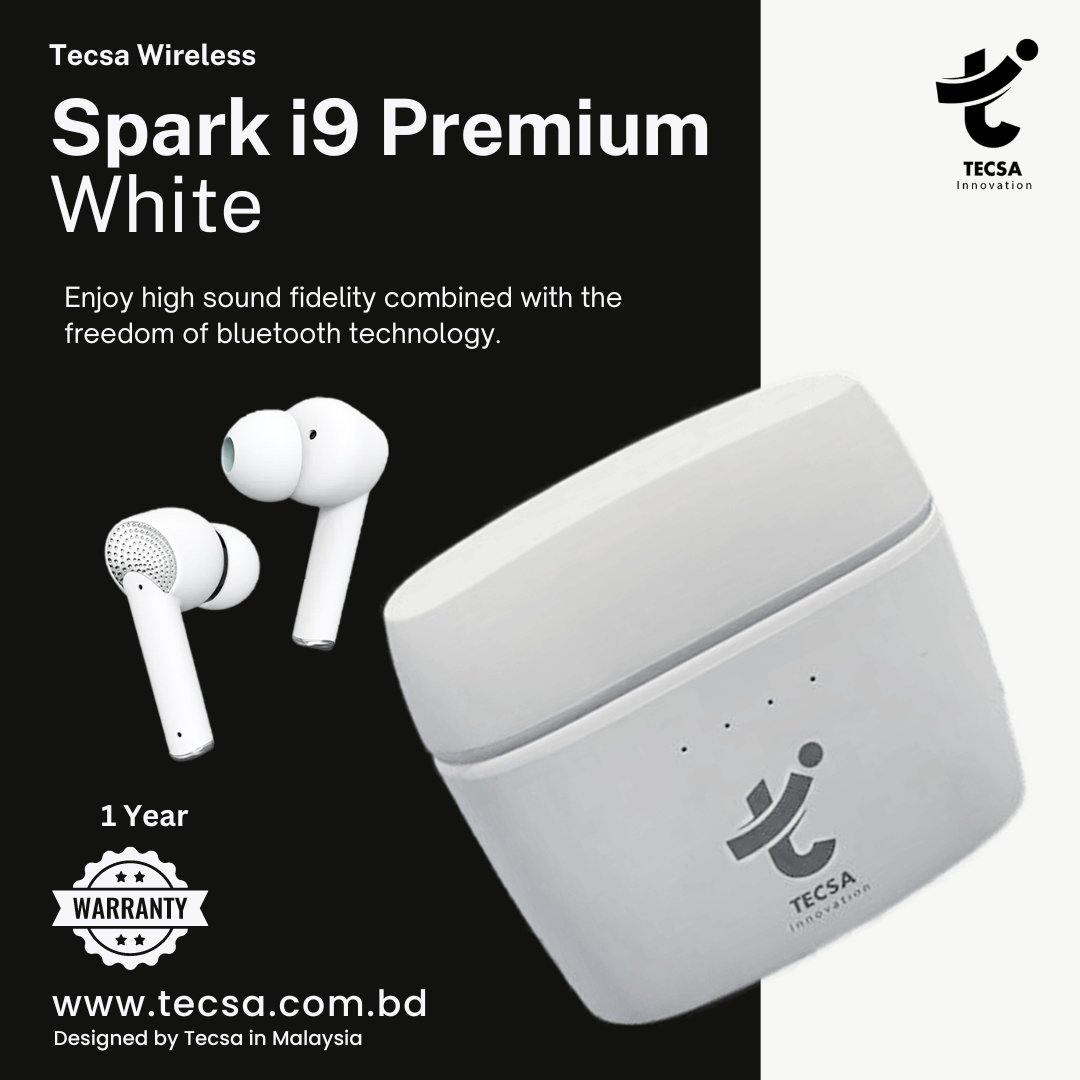Discover the Tecsa Spark i8, the best earbuds under 4000 TK in BD. These premium true wireless earbuds offer superior so...
10 Things to know about TECSA-i headphones
Here are some technical terms related to headphones that you may find useful for Tecsa-i:
1. Driver: The driver is the component in headphones responsible for converting electrical signals into sound waves. It consists of a magnet, voice coil, and diaphragm, which vibrate to produce sound.
2. Frequency Response: The frequency response refers to the range of frequencies that headphones can reproduce. It is usually expressed in Hertz (Hz) and represents the lower and upper limits of the audible spectrum. A wider frequency response generally indicates better sound reproduction across different frequencies.
3. Impedance: Impedance is a measure of electrical resistance in headphones and is typically measured in Ohms (Ω). It affects the power required to drive the headphones and can influence volume levels and audio quality. Higher impedance headphones may require more power to achieve optimal performance.
4. Sensitivity: Sensitivity measures how efficiently headphones convert electrical signals into sound. It is usually expressed in decibels (dB) and represents the sound pressure level produced for a given input power. Higher sensitivity headphones require less power to achieve higher volume levels.
5. Closed-back/Open-back: Closed-back headphones have sealed ear cups that isolate sound, both preventing sound leakage and blocking external noise. Open-back headphones, on the other hand, have perforated ear cups that allow some sound leakage and provide a more natural soundstage but offer less isolation.
6. Noise Cancellation: Noise cancellation technology reduces unwanted ambient noise by using built-in microphones to analyze and generate sound waves that cancel out external noise. Active noise cancellation (ANC) headphones are particularly effective at reducing low-frequency sounds.
7. Bluetooth: Bluetooth technology enables wireless connectivity between headphones and audio devices such as smartphones, tablets, or computers. It allows for convenient and tangle-free listening experiences.
8. Ear Cup/Ear Pad: The ear cup or ear pad is the part of the headphones that covers and surrounds the ear. It plays a role in providing comfort, noise isolation, and sound quality.
9. Inline Remote/Microphone: Some headphones feature an inline remote control and microphone on the headphone cable. It allows for convenient control of playback, volume, and call management without needing to access the connected device.
10. Soundstage: Soundstage refers to the spatial representation of sound, creating an illusion of width, depth, and height. A wide soundstage provides a more immersive listening experience, especially for audio recordings with multiple channels.




